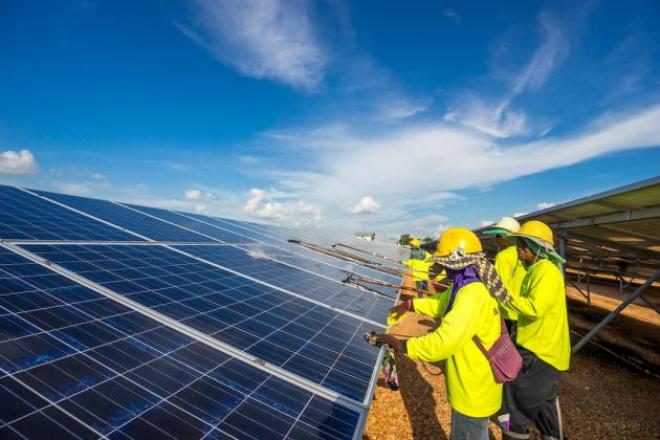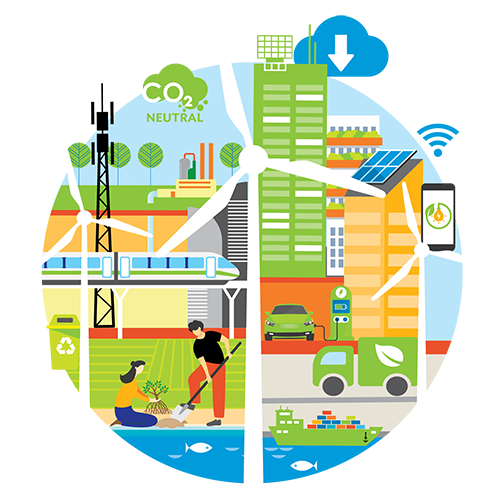Countries in Southeast Asia have adopted policies that enable the creation of green jobs, but there are still some areas that need to be strengthened, says a new report. Green jobs play a key role in the region’s transition to a more sustainable and climate-resilient future.
The joint Association of Southeast Asian Nations (ASEAN) and International Labour Organization (ILO) report urges countries to come up with a common definition of green jobs and skills; identify labor markets with green jobs potential; identify green jobs that are suited for people by age and gender; and develop sector-specific strategies.
The report also proposes identifying private sector activity in the green economy; assessing occupational health and safety hotspots; studying the social protection implications; and examining existing ASEAN mechanisms that can be replicated to foster coordination across green jobs policy.
What are green jobs?
Green jobs, as defined by the ILO, are good for people, the environment, and the economy. “They provide the double dividend of employment and reduced negative environmental impacts,” the report says. “Green jobs are decent jobs in economic sectors and activities that contribute to the preservation and restoration of the environment in either traditional sectors such as agriculture and manufacturing, as well as new, emerging green sectors such as renewable energy and energy efficiency.”
Southeast Asia is one of the most disaster-prone regions in the world, and it is especially vulnerable to severe climate impacts. Switching to clean energy not only reduces the region’s climate risks but is also expected to create green jobs.
The ILO predicts decarbonization will create up to 24 million green jobs by 2030, offsetting 6 million jobs expected to be lost by greening the economy. It says much of the green jobs to be created will be in Asia. Although the green transition will deliver a net growth in the number of jobs, “the geographies and workforces of where jobs are made or lost do not align, and therefore additional measures to manage and alleviate the negative employment impacts of decarbonization are needed to ensure a just and equitable transition,” the report says.
ASEAN countries can also benefit from opportunities in the expansion of environmental industries, greening transport, and the green building and construction sector.

What countries are doing
ASEAN leaders committed to promote green jobs in a meeting in 2018. They stressed the importance of promoting green jobs especially in the renewable energy sector, agriculture, construction, energy, forestry, manufacturing, transport, waste management, urbanization, tourism, industry, and technology.
Three years later, the report notes ASEAN has made inroads in promoting green jobs. The study finds high levels of green jobs policy readiness across ASEAN in areas including linking development planning to greening, recognizing the need for sector specific strategies and adjustments to training, and skills development activities.
For instance, green job mapping studies have been completed in Malaysia and the Philippines, which are needed to develop a future workforce career path and to identify job descriptions and skills needs.
In 2016, the Philippines also led the way in ASEAN in promoting green jobs with the enactment of the Green Jobs Act, which provides for fiscal and nonfiscal incentives for businesses that offer green jobs. The law also provides a mechanism for assessing and certifying green jobs.
Indonesia has identified seven national-level government institutions as partners for promoting and developing green jobs and green skills
Singapore has multiple programs supporting skills development in the workforce and at the institutional level.
In Thailand, the importance of green skills and the need to build green skill capacities within the workforce are recognized. The Department of Skill Development works with the private sector in this area.
The report notes that each country works at a different pace and with a differing focus. ASEAN is not as ready in terms of having policies relating to greening the economy and developing active labor market policies, social protection, and occupational safety and health.
The report also cites gaps in terms of knowledge and data sources, including understanding the country and sectoral level supply and demand drivers for green jobs and the impact on labor standards and occupational health and safety, as well as on education structures, particularly on technical and vocational education and training system (TVET).
“While more needs to be done, ASEAN has made good progress in developing a supportive policy ecosystem for the growth in green jobs. Designing and implementing a suitable policy mix is new for policy makers worldwide, and with this report, ASEAN has identified key actions needed to ensure an effective policy mix is put into place,” says Cristina Martinez, ILO’s Green Jobs senior specialist for Asia and the Pacific, in a news release.
“ASEAN needs to start the change toward environmental sustainability,” says A. Maniam, deputy secretary general (Policy and International), Ministry of Human Resources, Malaysia, in the same release. He says ASEAN aims to add more green jobs, a shift which will require new types of jobs, skills, and technology.
Policy recommendations
The report recommended the following measures:
- Come up with common and workable definition of green jobs and identify core green, indirectly green, and nongreen occupations across different sectors and geographies;
- Identify where green jobs potential, skill needs, and just transition hotspots are located;
- Identify green jobs suited for people depending on their age and gender;
- Create a knowledge sharing platform and opportunities for dialogue between TVET specialists, policy makers and other stakeholders to discuss, identify, and share best practice in developing green skills in ASEAN members;
- Map and share examples in developing sector-specific strategies, including for active labor market policies;
- Map and share examples and assessments of financing mechanisms and incentives for private sector activity in the green economy;
- Share assessments on private sector incentives for green jobs through an annual forum where progress can be tracked;
- Map and assess the occupational health and safety implications of the greening of employment across ASEAN, and identify how trainings can be enhanced;
- Map and assess the implications for and suitable modes of social protection associated with achieving a just transition; and
- Examine coordination mechanisms across ASEAN to identify and establish what successful coordination across green jobs policy framework looks like and how to replicate it.
This article was first published by BIMP-EAGA on 28 July 2021.

